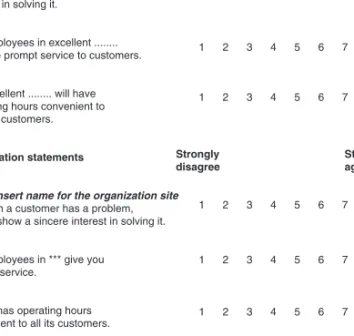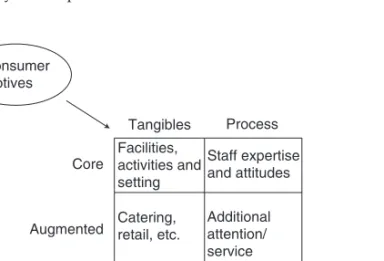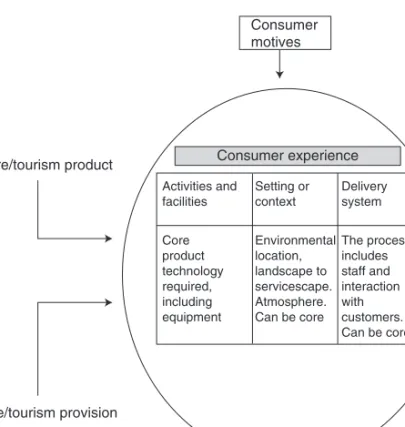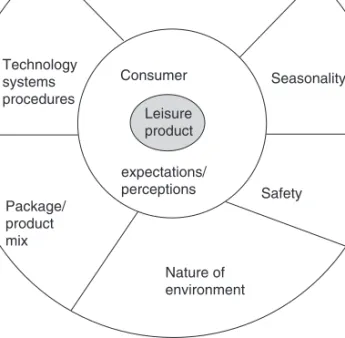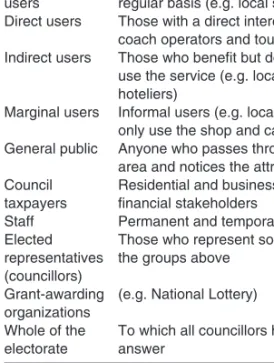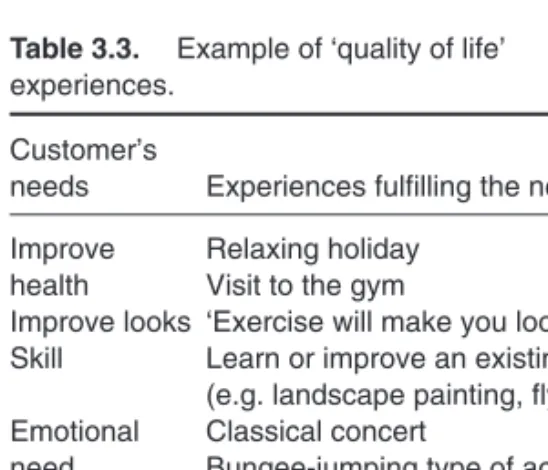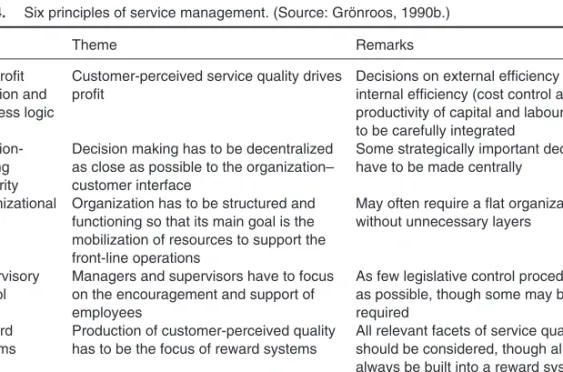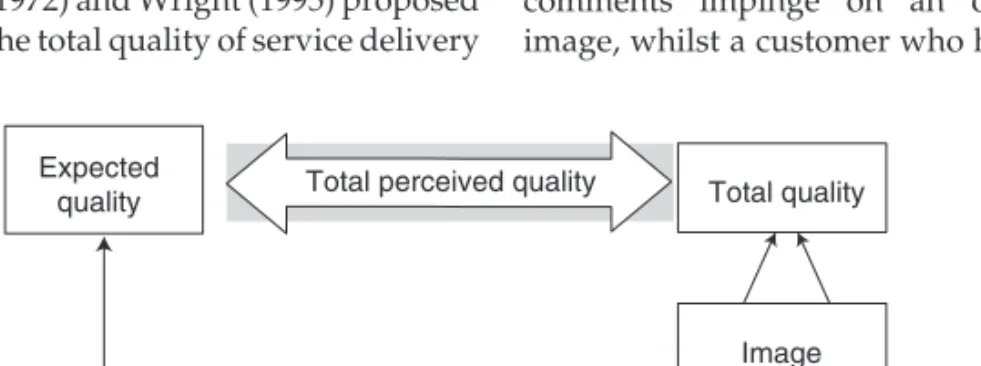Its essence therefore lies in the nature of the leisure and tourism product and especially the consumption experience. The validity of these ideas and theories in the context of the leisure and tourism industry is assessed.
Understanding Quality in Leisure and Tourism
The leisure and tourism industry encompasses a wide range of interested groups, regardless of industry, and their interrelationships are an important factor in understanding the dynamics of service quality management. The chapter describes the two schools of service quality management (North American and Scandinavian) and provides a critical assessment of the origins of quality theory in the manufacturing sector.
The Leisure and Tourism Product
- First-time visitor – mainly London and environs
- Traditionalist – time divided between London and established regional locations
- Explorer – who wants to get to know the country better
- The Britophile – who knows the country well and has friends or contacts
A perennial problem is the scope and scale of the leisure and tourism industry and how it is defined. The branded leisure and tourism product Branding is another factor in the development of the 'branded leisure experience'.
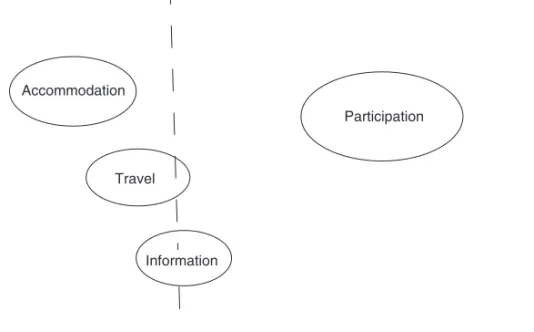
Quality as a Goal
Both of the above concepts of continuous improvement imply that the norms and values of traditional organizational culture cannot be maintained (Wilkinson and Willmott, 1995). Dale (1994a) listed many barriers to achieving TQM, including: (i) lack of senior management commitment to service quality, which is considered a quick fix to a specific problem rather than a long-term cultural change; (ii) fear of changes at work.
The Consumer
Another commission directly linked to the tourism and leisure industry is that which oversees the operation of the British National Lottery. Commercial Sector Stakeholders Stakeholders in the commercial tourism and leisure industry sector include some of the above categories.
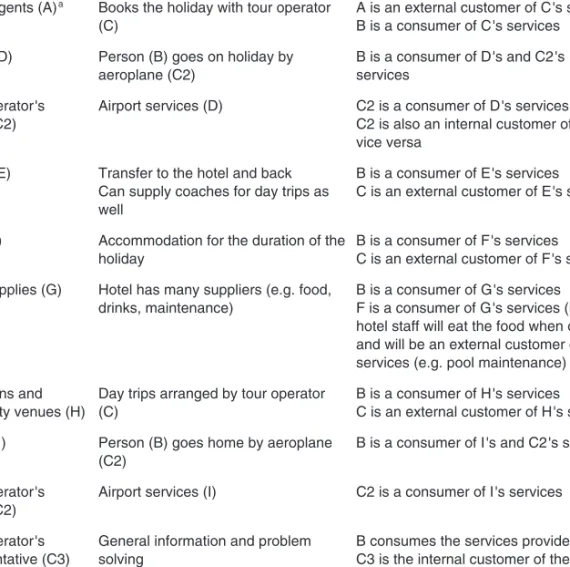
Concepts of Quality in Leisure and Tourism
A. Shewhart
The realization that intangible elements are subjectively assessed is very important to the leisure and tourism industry, which tries to fulfill abstract and even elusive customer needs. In the 1950s, Deming, Juran and Feigenbaum introduced quality management methods to the Japanese, while they were largely ignored in the USA, their own country (DTI, 1995).
E. Deming
Although these theories were developed for application in the manufacturing sector, they have some relevance to the tourism and leisure industry as highlighted by the authors. This was true in the 1980s, when the globalization of services was generally a one-way flow from the US to the rest of the world, as exemplified by Disney and McDonald's.
M. Juran
Juran's description seems to fit the tourism and leisure industry better than other parts of the service industry, such as banking and other financial services. The quality of the service provided to internal customers will have a major impact on the service provided to external customers.
V. Feigenbaum
Juran (1989) classifies services according to the output of each process: if the end product is a physical thing, it is classified as goods. This seems naive, since most processes are so specialized that they are all performed for someone else.
B. Crosby
The lack of application is a constant omission of all original quality gurus; this task was left to the theorists of service quality management. While quality management continues to be introduced to many organizations within the voluntary sector of the leisure industry, Kennedy's consultation strategies have recently been adopted into the public sector under the Best Value management regime (see Chapter 13).
Peters
Defining the concept of service quality is as difficult for service quality theorists as the multifaceted thoughts of the original quality gurus. Because of the close connection of the Nordic school of service quality with industry, Grönroos (1990b) examined the principles of service management in detail (Table 4.4).
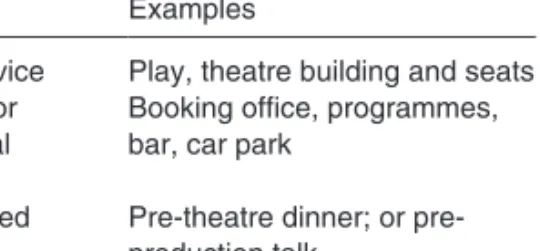
Customer Satisfaction
Most of the service quality management writers have considerable difficulty in understanding how customers rate services. Gummesson and Grönroos (1987) were also of the opinion that the image of the organization plays a role in the formulation of this judgement. The final part of the customer satisfaction equation is their judgment of the service they received: their perceptions.
It is known that customer expectations are influenced by past experiences and that previous perceptions of service contribute to this.
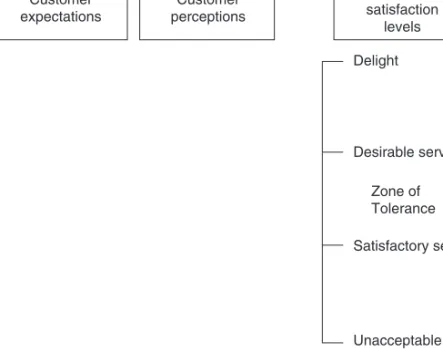
The Leisure and Tourism Experience
First, there is an interaction between the customer and the physical environment of the leisure and tourism experience. First, many managed leisure and tourism contexts create interaction between the customer and the social environment of the experience. Second, the nature of the leisure and tourism industry also involves considerable interaction between customer and staff.
The roles of the leisure and tourism professional require an understanding of how people define the world around them.
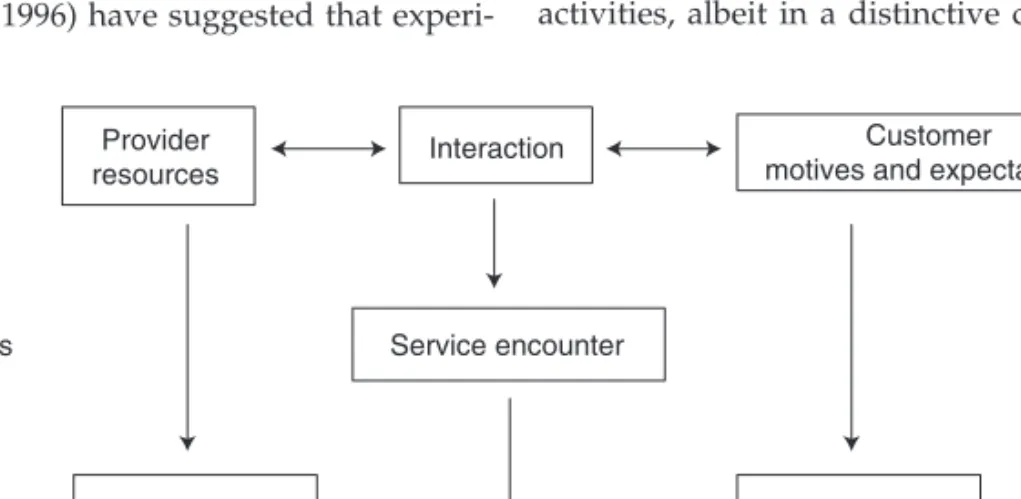
Designing Quality
Characteristics of Service
This was confirmed by Buttle (1993), Oakland (1993) and Becker (1996) and suggests that the outcomes of service (ie the benefits gained by customers) are also intangible and fleeting; this is especially the case when tourism and leisure industry services are considered. The tangible elements of the core service cannot be taken away (e.g. store fixtures and staff appearance). This helps customers assess the quality of the experience prior to the visit and reduces risk (Buttle, 1993).
The importance of the features of the service to the customer depends on the type of tourism and leisure experience offered and the sector in which it is provided.
Service Design
The classification of services demon- strates the nature of the service act and the
The service encounter or the interaction between customers and staff and systems is important in many services, but especially in leisure and tourism, where outcomes or benefits are inextricably linked to the process and the individual experience. The simultaneous production and consumption means that the characteristics of the process and product must be carefully planned and systematically managed to avoid errors and variations in service quality.
Operations are therefore now more com- plex in many leisure and tourism settings and
The impact of technology is particularly significant. It can have a bearing on the nature
Service design is also necessary for the operations in the facility or service to meet
The service design process enables the necessary systematic planning to take place,
Process management, design of the customer process and the service package also become more important. The value the customer places on the expectations of the service is particularly important at this stage. They help convey the values and nature of the service concept to everyone in the organization.
This phase relates to the functional quality and the team has worked with the team to identify the measurable design characteristics of the service.
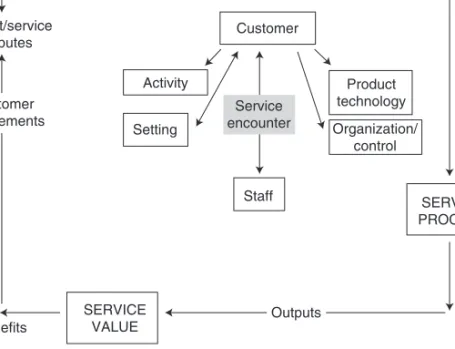
Capacity Management and Organizational Performance
They should be directly related to the objectives of the organization and the service they want to provide. The two extremes are 'the customer is always right' and the organization uses any complaints as a learning exercise (this will be discussed later), or. Some managers were quite elated when they favored the organization and not the customer.
This is an automatic refund with no questions asked or investigation done in the presence of the customer.
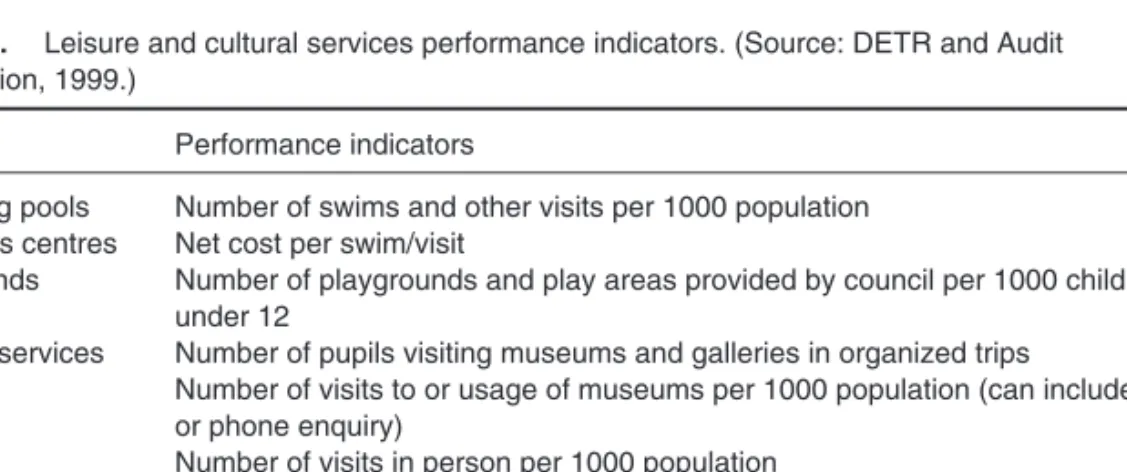
Achieving or Delivering Quality
The actual customer base in each case was relatively low, which may leave facilities vulnerable; fortunately, golf and aerobics are very popular. The golf course had the added advantage that courses in the immediate vicinity were few and very expensive. In the service quality management literature, meeting customer needs and expectations is central to identifying whether or not the right quality has been provided or achieved.
The task of Part 3 is to examine the behavioral and cultural aspects of service quality and what is required for leisure and tourism organizations to move beyond efficiency and systematic thinking and into the domain of total quality management.
Quality and Culture Change
As Atkinson (1990, p. 10) suggested, "The great fear is that we could be exposed to the secrets of TQM, have the answer to improving performance, yet find 10 reasons why we shouldn't." . 2001) found that many organizations and their senior managers simply do not understand the fundamentals of quality management. The public sector is not so simple and Robinson (1997) showed how the needs of multiple stakeholders can be another constraint in the pursuit of TQM. customer groups for local government leisure and tourism services:. the direct user of the facility or service; the internal customer, including other departments and council members; the person directly benefiting from the service without using it. O'Hanlon (1999) described the characteristics of organizational culture as:. taboos that no one talks about, such as being seen to leave on time; rituals, i.e. the ways things are done, such as staff development reviews or dealing with customers; totems, in which symbols of success are emphasized and many of those who really stand behind the achievement are ignored - perhaps the employee of the month awards; and values of the organization, i.e. who or what does the organization really value – people, safety, profit.
In its communications with staff, the company refers to "the three rings of perceived value," with the first and second rings owned and influenced by management and the third, the largest, denoting the domain of front-line performers.
Quality Management Systems
Quality Manuals and Audits A requirement of ISO 9000 2000, as with all
Search for excellence and dissemination of 'best practice' forms the underlying philosophy and is a major function of the organizers of the quality awards. Although there appear to be many different quality awards, their use of the Excellence Model as their foundation makes it easier for organizations to compare (see Chapter 12) against each other. Unfortunately, Jones didn't say who they were important to - the customer or the organization.
Based on a model of excellence, these quality awards enable management of all aspects of the business.
Quality Management Tools and Techniques
Process benchmarking is the easiest. A comparison is made between specific work
Service benchmarking is the comparison of a whole service (see example in Box 14)
Strategic benchmarking is a far riskier activity when the partners are competitors,
Part of this view is due to the fact that BPR has been associated with cost reduction (i.e. reducing the workforce). This is a research project of the Center for Environmental and Recreational Management (CERM) at the University of South Australia. The main advantage of the series of courses is said to be gaining competitive advantage through a well-trained staff.
Cumbria Tourist Board that the aim of the program is to 'look in detail at some of the.
Measurement of Quality
- Current customers. Ongoing monitoring of their needs and expectations as well as
- Past customers. To gain information as to the reasons they have stopped using the
- Potential customers. One of the most difficult groups to access but potentially
- Competitors’ customers. It is always useful to access information regarding major
It was originally used in the US financial sector (Parasuraman et al., 1985) and was subsequently made available to the rest of the service sector. By analyzing the scores on individual dimensions, specific elements of the customer service experience can be monitored. Quantitative as well as qualitative datasets can be generated, but due to the size of the samples, quantitative methods are usually used.
These strategies would increase research costs that the voluntary and public sectors of the tourism and leisure industry find difficult to afford.
